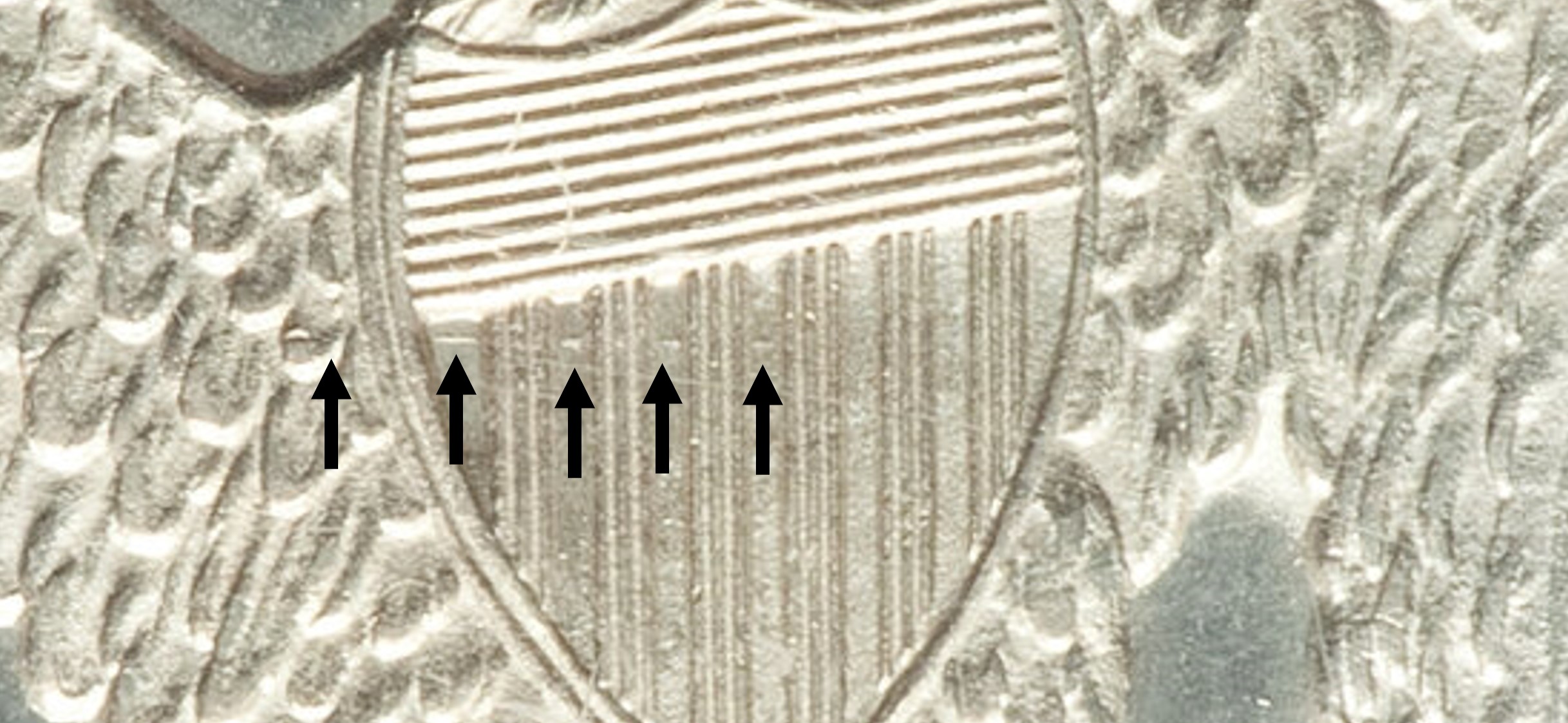|
|
Comments: This is the only use of Obverse 1 and the first of two uses of Reverse A. |
Obverse 1 The photo below shows the Obverse 1 attribution grid.  1868 Obverse 1 attribution grid Obverse 1 displays a misplaced 6 in the denticles. It spans two denticles below the right side of the prominent 6. The arrows in the photo point to this feature. Note also minor repunching on the 18. An additional marker is a small lump in the drapery below the elbow, shown below.  1868 Obverse 1 lump in drapery
|
Reverse A displays several heavy die lines in the motto that make identification relatively easy. The most notable extends from the field just left of the T in TRUST through the middle of TR to the edge of the scroll right of the base of R. This line is indicated by the arrows in the photo below. Several other lines are visible right of the E in WE, but the line through TR is the most easy to use for attribution.  1868 Reverse A die line through TR in motto Reverse A is also slightly doubled. The doubling is most visible at the top of the lettering in the motto¬ł indicated by the arrows in the photo below. Be careful when using this doubling to attribute the die as several other 1868 reverse dies display similar doubling.  1868 Reverse A die doubling Reverse A also shows a light die line in the upper recesses of the shield. This line is indicated by the arrows in the photo below.  1868 Reverse A die line through shield recesses Other die lines around the leaves are also clearly visible. These are shown in the photo below. The lines that extend to the left from leaf #4 are visible on coins that grade as low as VG.  1868 Reverse A die lines around the leaves All the Reverse A die markers fade as the die state progresses, so proceed carefully on this attribution.
|
| Photo credits:
Obverse 1 and Reverse A: 1868 PCGS AU details, cleaned, from the Osburn-Cushing reference collection. Reverse A die lines and doubling: 1868 PCGS PR61, from the Heritage archives, misattributed by PCGS as a proof. |
